European Patents Opposed
Based on information in the EPO's "Bulletin Search" database, the number of patents opposed in 2019 increased to around 3750. This is about 25% higher than the more-or-less uniform level which prevailed from 2011 to 2016. The increase in patents opposed since 2016 follows, but has not kept pace with, the increase in the numbers of patents granted each year since 2015. The estimated percentage of all granted European patents which are opposed, once around 4%, is now about 3%.
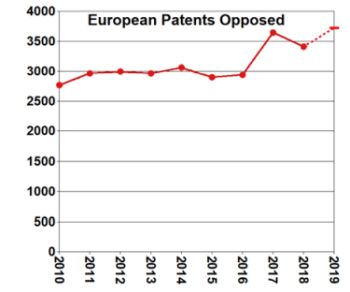
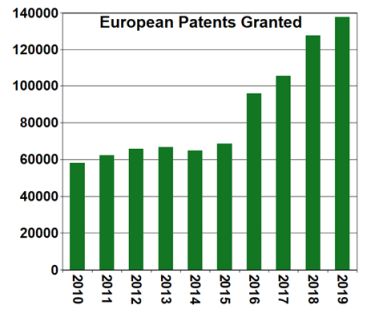
First Instance Opposition Proceedings
The EPO Annual Reports up to 2018 provide information on first instance opposition proceedings according to which the number of first instance decisions on oppositions each year more than kept pace with the number of patents newly opposed each year. Unfortunately, neither the EPO's "Patent Index" nor its "Patent Review" for 2019 provide corresponding information, although the "Patent Review" does say that at the end of 2019 pending opposition cases represented 15.4 months of work.
The accompanying "Quality Report" also says that by the end of 2019, 95% of all opposition cases were completed within 28.6 months (down from 67.5 months in early 2014).
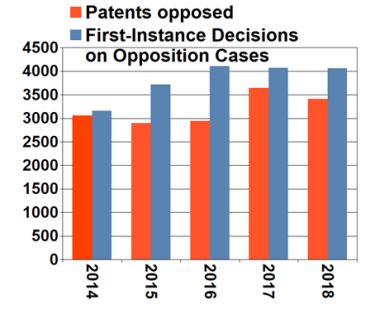
Neither the "Patent Index" nor the "Patent Review" provide information on the nature of the first instance decisions on oppositions in 2019. Assuming that the pattern of earlier years was maintained, "(i) patent revoked" and "(iii) opposition rejected" each accounted for more or less 30% of first instance decisions, with "(ii) patent maintained in amended form" accounting for the remaining 40%of first instance decisions. Available information on first instance decisions does not deal with other possible outcomes, e.g. opposition inadmissible or opposition proceedings terminated (for instance if the opposition is withdrawn).
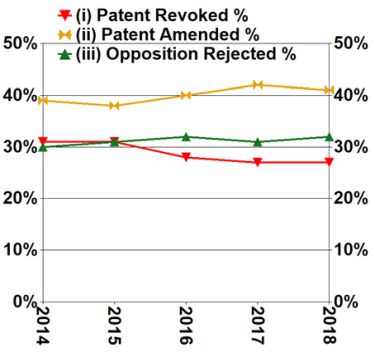
Final Outcomes of Oppositions
In 2019 the outcomes of opposition proceedings involving around 3600 opposed patents became final, more or less keeping pace with numbers of patents newly opposed. Final outcomes arise from first instance opposition proceedings if no appeal is entered, or from appeal proceedings. In 2019, the final outcomes "(i) patent revoked" and "(ii) patent maintained in amended form" were virtually equal in number, with "(iii) opposition rejected" some way behind. Other possible outcomes (iv) e.g. opposition inadmissible or opposition proceedings terminated (for instance if the opposition is withdrawn) were relatively infrequent.
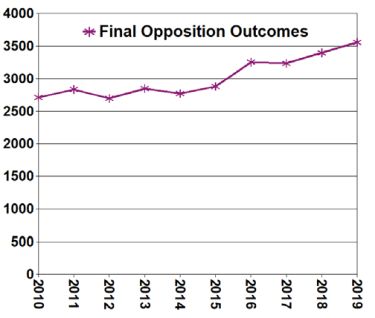
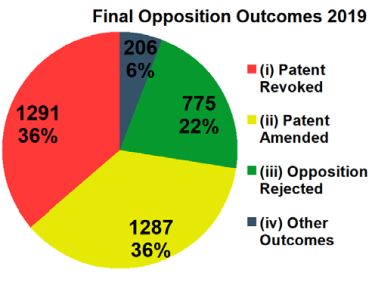
The balance between different final opposition outcomes has changed. Final outcomes "(ii) patent maintained in amended form" increased in number by more than half from 2010 to 2019, while "(i) patent revoked" increased in number by much less. In 2010, "(i) patent revoked" was the final outcome of just over 40% of opposition proceedings and "(ii) patent maintained in amended form" was the final outcome of 30%. In 2019 this 10% difference was reduced to zero. The final outcome "(ii) opposition rejected" also increased in number by more than half from 2010 to 2019 (and from 18% to 22% of final outcomes).
Together, "(i) patent revoked" and "(ii) patent maintained in amended form" account for around 70% of final outcomes, fairly consistently from 2010 to 2019: in over two thirds of opposition proceedings the final outcome eliminates or restricts the opposed patent. Of course, each restriction resulting from the amendment of a patent has to be assessed individually to judge whether, and how much, it is of real benefit to the opponent, who would aim to guard against amendments which might narrow down but strengthen a patent in a way adverse to the opponent's interests.
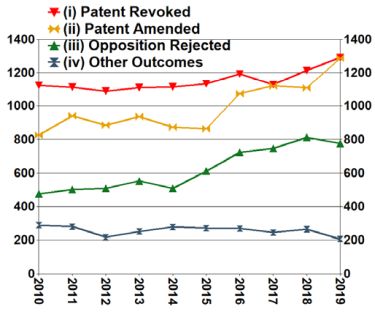
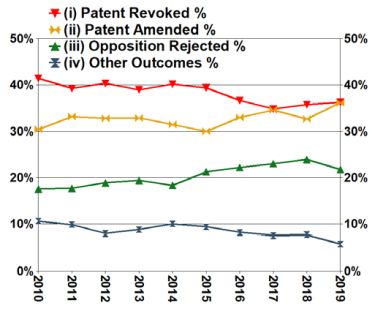
Click here to continue reading ...
The content of this article is intended to provide a general guide to the subject matter. Specialist advice should be sought about your specific circumstances.


